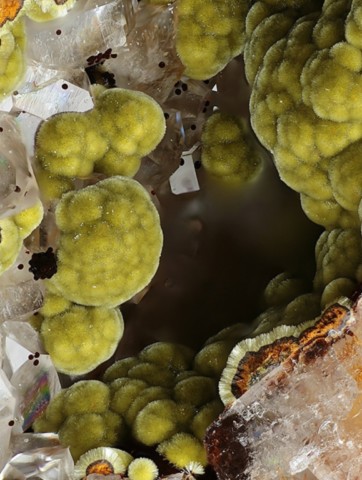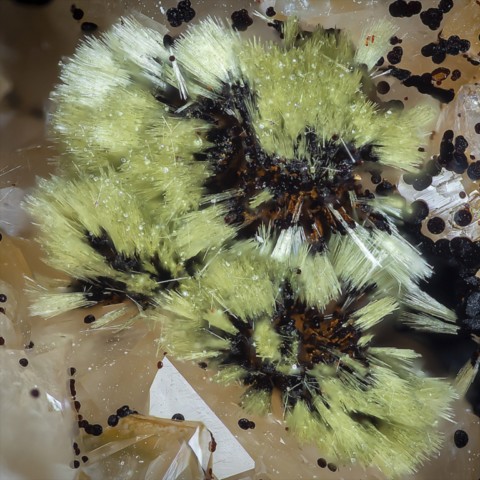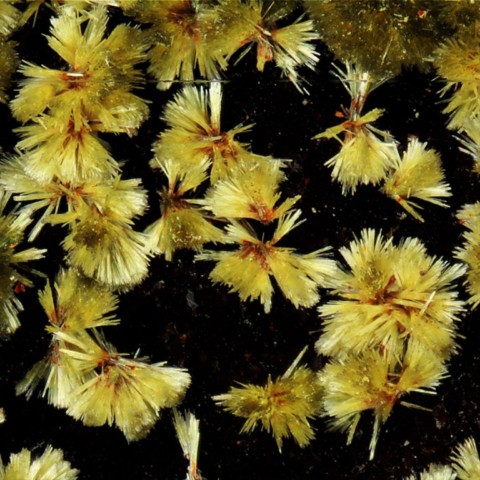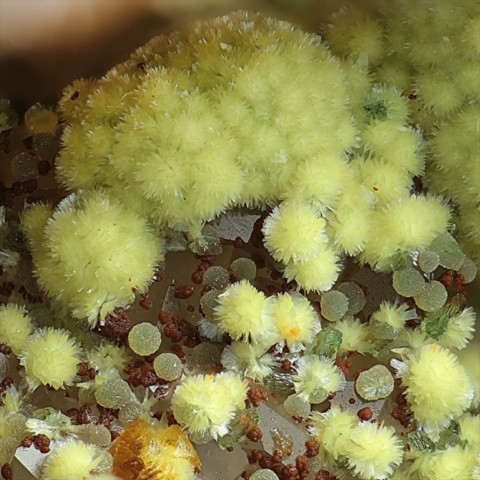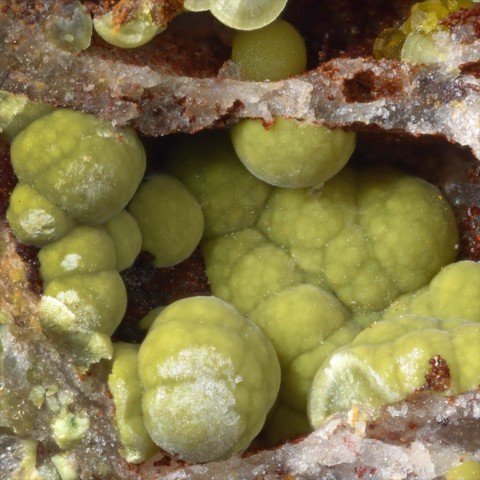KIDWELLITE
Class : Phosphates, arsenates, vanadates
Subclass : Hydrated phosphates
Crystal system : Monoclinic
Chemistry : NaFe9(PO4)6(OH)10 5H2O
Rarity : Rare
Kidwellite is a secondary phosphate of sodium and iron which forms by alteration and replacement of primary phosphates ; it is found more rarely in granitic phosphate pegmatites. It was named in honor of the American geologist Albert Lewis Kidwell who discovered the mineral. Kidwellite forms tiny acicular crystals gathered in fluffy rosettes, encrustations or spherolitic to botryoidal masses, yellow to pale greenish in color, sometimes greenish white.
Main photo : Kidwellite from Clara Mine, Germany © Michael Förch
Kidwellite in the World
Twinning
No twins known for this mineral species.
Fakes and treatments
No fakes recorded for this mineral species.
Hardness : 3
Density : 3.04 to 3.3
Fracture : Irregular
Streak : Yellow
TP : Translucent to opaque
RI : 1.787 to 1.805
Birefringence : 0.018
Optical character : Biaxial -
Pleochroism : None
Fluorescence : None
Solubility : -
Magnetism : NoneRadioactivity : None

